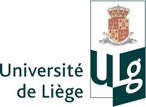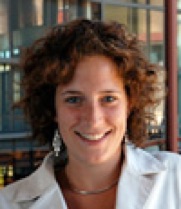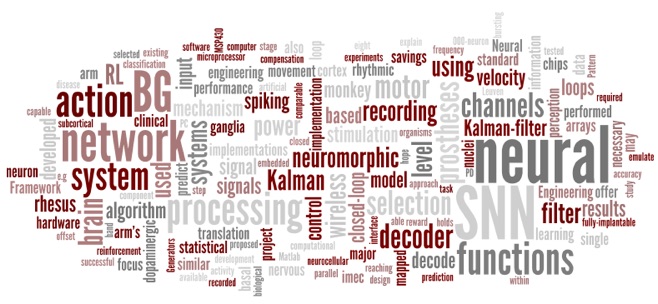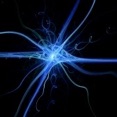Julie Dethier
Ph.D. - Research fellow F.R.S.-FNRS
Systems and Modeling Research Unit
Julie Dethier
Ph.D. - Research fellow F.R.S.-FNRS
Systems and Modeling Research Unit



Office
Montefiore Institute (Parking 32), 1.129
Quartier Polytech 1
Allée de la Découverte 10
B-4000 Liège (Sart-Tilman)
Belgium
E-mail: jdethier@ulg.ac.be
LinkedIn: Link
Contact
Education
2014 - 2015: Doctoral research stay, Princeton University
VSRC under the supervision of Prof. Leonard
2011 - 2015: Research fellow F.R.S.-FNRS, Ph.D. research in the Systems and
Modeling Research Unit, University of Liège, under the supervision of
Prof. Sepulchre, University of Cambridge
2010 - 2011: Master of Science in Bioengineering, Stanford University
Laboratory work in the Brains in Silicon lab
2008 - 2010: Master of Applied Sciences in Biomedical Engineering,
summa cum laude, University of Liège
2005 - 2008: Bachelor of Applied Sciences, summa cum laude, University of Liège
Research interests
For my Ph.D. research at the University of Liège under the supervision of Prof. Sepulchre, Cambridge University, my center of interest is on a neuronal switch that connects unicellular and network rhythms.


Publications
Complete list: orbi
Journal
J. Dethier, G. Drion, A. Franci, and R. Sepulchre, A Positive Feedback at the Cellular Level Promotes Robustness and Modulation at the Circuit Level, Journal of Neurophysiology, in press [pdf]
G. Drion, A. Franci, J. Dethier, and R. Sepulchre, Dynamic Input Conductances Shape Neuronal Spiking, eNeuro, 1(2), 2015 [pdf]
J. Dethier, P. Nuyujukian, S.I. Ryu, K.V. Shenoy, and K. Boahen, Design and validation of a real-time spiking-neural-network decoder for brain-machine interfaces, Journal of Neural Engineering, 10, 036008, 2013 [pdf]
Conference
J. Dethier, G. Drion, A. Franci, and R. Sepulchre, Impacts of a unicellular mechanism on network behaviors, 32nd Benelux Meeting on Systems and Control, 2013 [pdf]
J. Dethier, D. Ernst, and R. Sepulchre, Neuromorphic reinforcement learning, 31st Benelux Meeting on Systems and Control, 2012 [pdf]
J. Dethier, P. Nuyujukian, C. Eliasmith, T. Stewart, S.A. Elassaad, K.V. Shenoy, and K. Boahen, A brain-machine interface operating with a real-time spiking neural network control algorithm, Advances in Neural Information Processing Systems 24, Curran Associates, Inc., pp. 2213-2221, 2012 [pdf]
J. Dethier, V. Gilja, VP. Nuyujukian, S.A. Elassaad, K.V. Shenoy, and K. Boahen, Spiking neural network decoder for brain-machine interfaces, IEEE EMBS Conference on Neural Engineering, IEEE Press, pp. 396-399, 2011 [pdf]
Thesis
Doctoral thesis: The role of feedback in maintaining robustness and modulation across scales: Insights from cellular and network neurophysiology, September 2015 Advisor: Prof R. Sepulchre [pdf]
Master thesis: Design for a multi-channel recording and stimulation device, June 2010 Advisor: Prof J. Destiné [pdf]

Useful links:



Awards and Honors
For my master thesis, I worked on the realization of a multi-channel recording system for neural applications at imec, Leuven. The read-out conditioned and digitized eight channels and provides the digitized output to an existing TI MSP430 based microprocessor system for wired or wireless data handling. Advisor: Prof J. Destiné [pdf]


?
Biological rhythms play a major role in the functioning of the brain. However, the generation mechanisms and functions of these rhythms are still poorly understood. The particular rhythms of interest are the pathological beta-band oscillations in the basal ganglia, a group of subcortical nuclei that act as a cohesive functional unit, under parkinsonian conditions. The neurodegenerative disorder named Parkinson’s disease (PD) results from the death of dopamine-generating cells and correlates with severe motor symptoms. Recent progress in deep-brain stimulation (DBS) therapies gave access to subcortical recordings and revealed the highly rhythmic activities present in the basal ganglia: rhythmic bursting activity at the neurocellular level and beta frequency band oscillations at the network level. The strong beta oscillations in PD are believed to disturb the signaling patterns along the basal ganglia, altering the transfer of motor information through the cortico-basal ganglia-thalamocortical loops. Reductions in the level of the pathological oscillations, e.g. during dopamine therapies or DBS, often lead to an improvement of the motor symptoms. This research project aims at narrowing the gap between rhythms at the cellular and at the network levels for a better understanding of network oscillations’ generation and how oscillations affect a neural network’s information processing capabilities. The concepts and tools are developed in a general framework but they will be primarily specialized to the case of the basal ganglia and their switch to rhythmic behaviors.
2014: WBI excellence grant for research stay in Princeton University
Article in the «15e jour du mois», monthly magazine of ULg (Article)
Participation to a Doc’café (Video)
2013: LEAR Foundation Fellowship for research stays at Cambridge University
Elected among the 20 Emerging Creative Walloons by TALK magazine (Article)
Audience Award at the «Ma thèse en 180 secondes» contest, ULg final (Video)
2012: Invited speaker at the LIEGE CREATIVE conference
2011: 2nd Best Poster Award, Symposium of the IEEE EMBS Benelux Chapter
Speaker at the Stanford Bioengineering Department Commencement Ceremony
Margareta Van Beneden Fellowship
2010: B.A.E.F. Fellowship
Fulbright Honorary Fellowship
Rotary International, District 1630 Fellowship
AILg Best Master’s Thesis Award, EVS Broadcast Equipment
2009: Pisart Study Grant for Foreign Languages
2008: Pisart Study Grant for University Entrance
